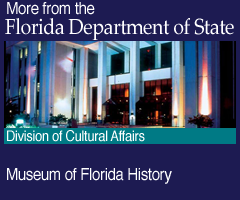NASA and the Space Program Change Florida

The Space Age changed Florida forever. Thousands of new workers moved to the state and transformed Cape Canaveral into a hub of aeronautics, electrical engineering and manufacturing.
The National Defense Education Act of 1958 provided federal funding for education, especially in mathematics, science, engineering and modern foreign languages. New science and math programs were created, and existing programs were strengthened, as money poured in to educate Floridians to work in the space industry.
Space became an integral part of Florida’s culture. Communities near Cape Canaveral promoted Florida’s “Space Coast” as a new and exciting destination for tourists. Motels, restaurants and even housing developments adopted space-related themes to capture the interest of visitors and potential new residents. Developers and chambers of commerce emphasized Florida’s role in the space industry to attract new people and new businesses to their communities.
After the successful Apollo launches and subsequent change in direction of NASA’s mission and goals, major portions of NASA personnel and members of the area’s space-related workforce left for high-tech and military career opportunities in the Pacific Northwest, southern California and the northeastern states. However, thousands of native Floridians and recruited workers stayed following decades of serving the nation’s drive to explore space.
An entire generation of space industry workers retired in the Space Coast area. Other initiatives, such as environmental services, including the development of solar energy technology, attracted even more skilled workers to the Space Coast. After five decades of space age development, Florida remains a center for technology and manufacturing industries as well as the home of one of the world’s most significant spaceports.
This unit provides an introduction to Florida’s involvement in the Space Age through photographs, videos and primary source documents.

 Listen: The Bluegrass & Old-Time Program
Listen: The Bluegrass & Old-Time Program


